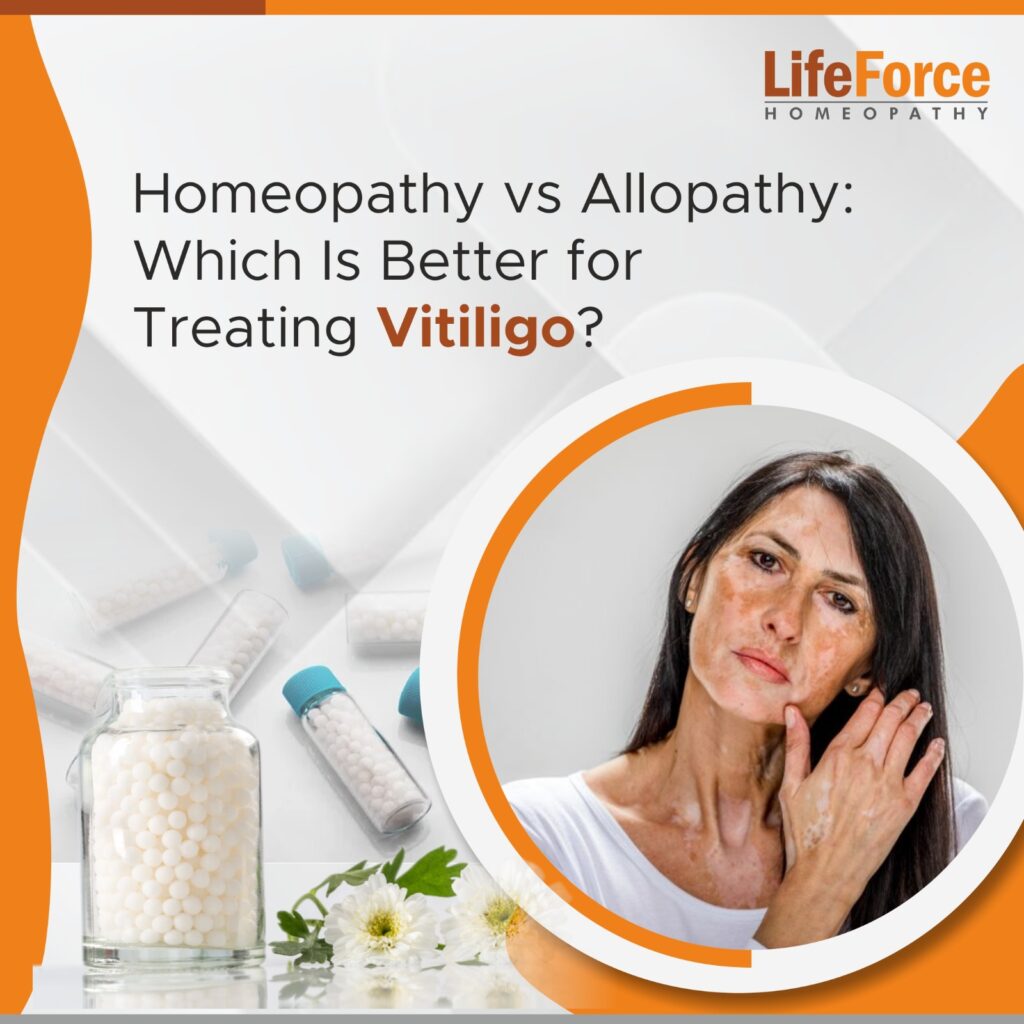Vitiligo or white patches is called as ‘Safed daag’ in Hindi and ‘Kod’ in Marathi. Vitiligo is a skin disease in which the pigment cells of the skin i.e. melanocytes, are destroyed in certain areas. Melanocytes are the cell by which skin pigment known as melanin is formed. So, due to the destruction of melanocytes, there occurs a loss of skin color in the form of depigmented or white patches of skin on the body.
Symptoms Of Vitiligo:
The most prominent and typical symptom of vitiligo is the occurrence of depigmented white spots. It may be one or multiple. It can be focal and localized to one area, or it may affect several areas on the body. It can be variable in size. It can be unilateral or bilateral.
People suffering from vitiligo often find it an embarrassing, particularly in the social sphere, even though this skin condition is not at all contagious. So, it becomes necessary to learn what increases the risk of developing vitiligo. So, let’s have a look at it.
What Increases Your Risk For Vitiligo?
The exact cause of vitiligo is not yet known clearly. However, most medical experts believe that it is an autoimmune condition in which the body’s immune system mistakenly attacks and destroys certain cells within the body.
Some other theories suggesting the following conditions can be responsible for the occurrence of this skin condition
- Genetic Tendencies:
If in a family history one or more of the following diseases are present, the risk of vitiligo is then increased.
- Vitiligo
- Hypothyroid or Under-active thyroid
- Diabetes
- Alopecia areata
- Cancer

- Autoimmune Links:
If any other autoimmune conditions, such as psoriasis, rheumatoid arthritis, lichen planus, & alopecia Areata etc., are present in the family’s medical history then it may also increase your risk of developing vitiligo.
- Hormonal Connections:
We have observed that hormonal disorders, such as Hypothyroid or Underactive thyroid & Diabetes etc., also increases the risk of the development of vitiligo.
- Depending on the population, the following disorders can also increase the risk of vitiligo:
- Scleroderma (which is known to be a disorder of the connective tissue of the body)
- Lupus
- Thyroiditis caused by an improperly functioning thyroid
- Pernicious anemia, an inability to absorb vitamin B-12
- Addison’s disease
- Rheumatoid arthritis
Also Read: – Vitiligo Is Not A Curse
- Trauma & Injury:
Some experts also report the development of vitiligo after the occurrence of incidents like:
- Severe sunburns or cuts
- Exposure to toxins and chemicals
- Stress:
Nowadays, it has been seeing that due to the fast running life everyone is stressful. Stress also increases the risk of vitiligo.
Treatment For Vitiligo:
Vitiligo is not a serious disease, medically speaking. This skin condition affects the patient’s social life. Medically, it does not harm the individual’s body medically. So, it has more social significance than medical. It can affect the lives of the sufferers only cosmetically and personally.
There exist several kinds of treatments for vitiligo available today under different medical systems.
- Conventional Treatment:
Topical therapy is used by using topical agents, such as Methoxsalen, Trioxsalen, corticosteroids and calcineurin inhibitors.
Even though this mode of treatment is utilized for treating vitiligo, it is known to have some side-effects.
- Ayurvedic (herbal) Treatment:
Many Ayurvedic medicines are recommended to obtain positive and effective results in relief from vitiligo. As well as some other method like raktamoksha (therapeutic bloodletting), either by topical application of leeches to affected areas or by using a syringe or surgical knife, with regards to the affected skin patches, are used to obtain a recovery from the condition.
- Surgical Treatment:
In surgical treatment, skin grafting, punch skin grafting, and micro pigmentation are used to get the desired result. But, the skin treatment of skin grafting takes time and is costly, so many people find it neither acceptable nor affordable.
- Homeopathic Treatment:
The homeopathic approach to treat any disease is focused on improving the immune system. In homeopathy, medicine is selected on the basis of the totality of symptoms which has the capacity to correct the altered immunity that led to the development of the disease. It is a totally safe and effective treatment.
So, if you want to know more about vitiligo, you can visit our website www.askdrshah.com or you can directly call us on our phone no: 022-66888888.
Written by Dr. Priyanka Agarwal, Associate doctor to Dr. Rajesh Shah (Hom, MD)




